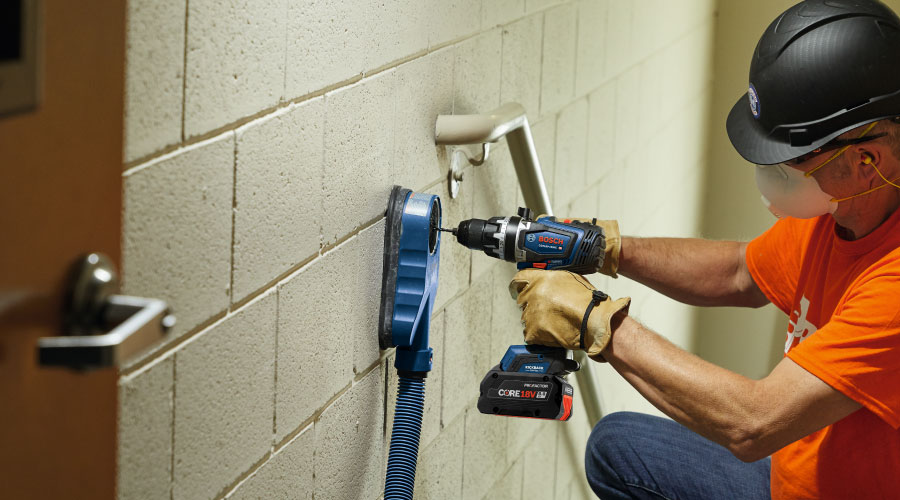Demand Response, Commisssioning, and Training: Utility Partnerships
Second part of a two-part article about working with utilities on energy efficiency savings.
Demand response programs use rate design to provide a financial incentive for customers to reduce or shift their energy use during peak periods. For instance, a facility may cycle off its lighting or air conditioning system for ten to fifteen minutes each hour during periods of high demand. In return, the facility receives payment for reducing its load.
Demand response programs are a way for utilities to balance supply and demand without purchasing more expensive power, or investing in costly new power plants that are needed only at peak times. They also help mitigate the risk that the reliability of the power systems will be compromised during periods of high demand.
While demand response programs originally were aimed at large energy users, the rise of smart meters, energy management systems, and building automation systems means smaller facilities can now easily participate in them, says John Balfe, high performance buildings associate, also with NEEP. What’s more, “taking a bunch of smaller or mid-sized facilities offline can have a big impact on peak demand, just as removing one larger energy consumer would as well,” he adds.
Many utilities also offer “time-of-use plans.” Essentially, they offer lower rates for energy consumed during periods of lower demand. Rather than pay a flat rate, facilities that move to time-of-use plans pay rates that vary, depending on the time of day and time of year in which the energy is used.
Commissioning and training
Some utilities also offer energy efficiency programs that focus on the ways in which the equipment within a facility operates. For example, a utility may offer some financial support for commissioning. Commissioning “tests, corrects, and sets building systems to operate properly, which improves performance and reduces energy use,” York says. For instance, an HVAC system that isn’t performing as designed to maintain desired temperatures generally will use more energy than necessary. If the commissioning process reveals the need for major investments in new equipment, the utility may develop custom rebates or other incentives for the purchase, according to York.
Larger customers might work with a utility on “strategic energy management,” York says. An energy efficiency engineer or analyst works with the facility manager to continually reduce energy use. While one-time upgrades are important, these programs recognize energy efficiency is an ongoing process.
Many utilities also participate in the “Building Operator Certification” program, an initiative of the Northwest Energy Efficiency Council, of which York says he’s a big fan. It teaches participants how to boost a building’s comfort and efficiency by making its systems work better together.
Participants can earn two levels of certification. Level 1 helps participants develop a broad understanding of efficient building operation. The courses focus on HVAC controls, common operational improvements, and building scoping for energy efficiency. Level II offers more targeted training in equipment trouble shooting and diagnostics.
While educated and informed facility employees are key, they can only do so much. “The facility manager and building operator can’t do the job alone,” Sarno-Goldwaithe notes. “It really takes a team approach. You have to engage occupants about their impact on the building operation.” Utilities also can offer guidance on ways to increase occupant engagement.
A starting point often is information. For instance, plug loads from computers and other devices can account for 25 percent of total energy consumption in a typical office building, and up to 50 percent of energy consumption in high-efficiency buildings, according to the U.S. General Services Administration. The good news? Implementing simple, low- or no-cost strategies can cut plug loads by up to 50 percent, the GSA says.
However, occupants first need to be aware of the impact of their use and the potential benefits of cutting it, and then take steps to reduce energy consumption. PSE offers a robust “resource conservation manager” or RCM program, Corbett says. For some facilities, PSE will cover a portion of the salary of an “energy champion” who focuses on modifying occupant behavior so long as the facility meets agreed upon energy-saving targets.
To help the individual succeed, PSE provides a number of support services. These include training on energy accounting and assistance developing programs that can boost awareness of the need for energy efficiency.
Thoughtful and ongoing initiatives designed to save energy can have an impact. The Industrial Strategic Energy Management Initiative, a program of the Boston-based Center for Energy Efficiency, examined the results of strategic energy management (SEM) programs. SEM programs emerged from the continuous improvement approaches used in many production operations, and focus on reducing energy intensity over time. Rather than focus on equipment change, they look at changing business practices, operations, and individual behavior.
Researchers tallied the results of the programs, and found they reduced overall electric energy intensity by 5.4 percent during the one-year implementation period. While this study focused on industrial users, it provides evidence that concerted efforts to reduce energy consumption can pay off.
Engaging with a utility
Facility managers interested in working with a utility to assess and reduce energy consumption can start online. Most utilities employ program managers or energy efficiency experts who work with customers on energy-saving programs, and provide contact information on their website. The websites often summarize the programs available, as well. “Utilities are very happy to hear from customers,” York says. The expert often can act as a single point of contact, and can work with the facility manager to determine which programs are a good fit in the facility’s quest to shed a portion of its energy load.
“If you’re starting any energy efficiency project, go to the utility,” Sarno-Goldwaithe says. “They can offer incentives, technical guidance, and assistance.” The utility probably will be able to provide granular data on energy consumption, and then offer recommendations on the efficiency changes or programs likely to have the greatest impact at the lowest cost. These might include investments in higher-efficiency equipment, but can be as mundane as showing the facility manager at a school the savings possible from turning off the gas pilot light during the summer “Sometimes minor things turn into big dividends,” she says. n
Karen Kroll, a contributing editor for Building Operating Management, is a freelance writer who has written extensively about real estate and facility issues.
Email comments and questions to edward.sullivan@tradepress.com.
SIDEBAR: Massachusetts tops ACEEE efficiency ratings
Each year, the American Council for an Energy-Efficient Economy ranks state energy efficiency policies and programs. This year’s report, The 2015 State Energy Efficiency Scorecard, evaluates states in six policy areas, including building energy codes and compliance, combined heat and power policies, and state-government-led initiatives around energy efficiency. Massachusetts topped the most recent rankings, driven partly by greater investment in energy efficiency programs that require utilities to save a growing percentage of energy each year through efficiency measures.
Related Topics:













